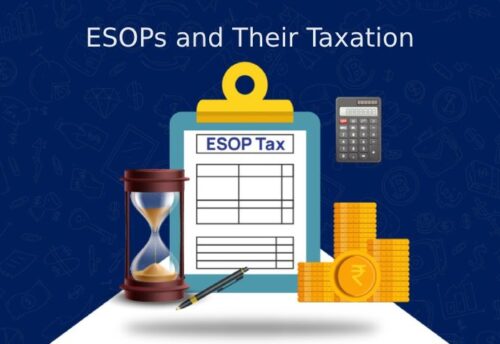
- 02/10/2024
- MyFinanceGyan
- 184 Views
- 4 Likes
- Investment
National Pension System (NPS)
National Pension System (NPS) is a voluntary retirement savings scheme laid out to allow the subscribers to make defined contribution towards planned savings thereby securing the future in the form of Pension. It is an attempt towards a sustainable solution to the problem of providing adequate retirement income to every citizen of India.
At the time of normal exit from NPS, the subscribers may use the accumulated pension wealth under the scheme to purchase a life annuity from a PFRDA empaneled life insurance company apart from withdrawing a part of the accumulated pension wealth as lump-sum, if they choose so. PFRDA is the nodal agency for implementation and monitoring of NPS.
Who can open a NPS account under All Citizen Model?
A citizen of India, whether resident or non-resident, subject to the following conditions:
Applicant should be between 18 – 70 years of age as on the date of submission of his/her application and should comply with KYC norms prescribed.
Benefits of NPS Account:
- Low Cost: NPS is considered to be the world’s lowest cost pension scheme. Administrative charges and fund management fee are also lowest.
- Simple: All applicant has to do is to open an account with any one of the Point of Presence (POP) / Point of Presence–Service Provider-Authorized branches of POP for NPS (POP-SP) across India and get a Permanent Retirement Account Number (PRAN)
- Flexible: Applicant can choose his/her own investment option and Pension Fund or select Auto choice to get better returns.
- Portable: Applicant can operate an account from anywhere in the country and can pay contributions through any of the POP-SPs irrespective of the POP-SP branch with whom the applicant is registered, even if he/she changes his/her city, job etc. and also make contributionn through eNPS. The account can be shifted to any other sector like Government Sector, Corporate Model in case the subscriber gets the employment.
Tax benefit to employee:
Individuals who are employed and contributing to NPS would enjoy tax benefits on their own contributions as well as their employer’s contribution as under: –
- Employee’s own contribution: Eligible for tax deduction up to 10% of Salary (Basic + DA) under Section 80 CCD (1) within the overall ceiling of Rs. 1.50 lacs under Sec 80 CCE.
- Employer’s contribution: The employee is eligible for tax deduction up to 10% of Salary (Basic + DA) contributed by employer under Sec 80 CCD (2) over and above the limit of Rs. 1.50 lacs provided under Sec 80 CCE.
Tax benefit for self-employed:
Eligible for tax deduction up to 10 % of gross income under Sec 80 CCD (1) with in the overall ceiling of Rs. 1.50 lacs under Sec 80 CCE. Subscriber is allowed deduction in addition to the deduction allowed under Sec. 80CCD (1) for additional contribution in his NPS account subject to maximum investment of Rs. 50,000/- under sec. 80CCD 1(B)
*Tax benefits would be applicable as per the Income Tax Act, 1961 as amended from time to time.
Types of Accounts:
- Tier -I Account: The applicant shall contribute his/her savings for retirement into this condition; & restricted withdrawal account. This is the retirement account and applicant can claim tax benefits against the contributions made subject to the Income Tax rules in force.
- Tier-II Account: This is a voluntary savings facility. The applicant will be free to withdraw his/her savings from this account whenever he/she wishes. This is a not a retirement account and applicant can’t claim any tax benefits against contributions to this account.
Contributions:
The subscriber can contribute the amount through cash, local cheque, demand draft or Electronic Clearing System (ECS) at his/her chosen POP-SP. However, for cash transactions exceeding Rs.50000/- subscriber needs to submit the copy of the PAN card as per the Anti-Money laundering (AML) rules. Also, no outstation cheques shall be accepted.
Minimum Contributions (For Tier-I):
- Minimum contribution at the time of account opening and for all subsequent transactions- Rs 500
- Minimum contribution per year – Rs 1,000 excluding charges and taxes
- Minimum number of contributions in a year – 01
Charges and Penalty for non-compliance of mandatory minimum contributions:
- If the subscriber contributes less than Rs. 1,000 in a year, his/her account would be frozen and the facilities provided by CRA such as online view of account etc. will be restricted.
- In order to reactivate the account, the subscriber would have to pay the minimum contributions of Rs. 500/-
- A frozen account shall be closed when the account value falls to zero.
Minimum Contributions (For Tier-II):
- Minimum contribution at the time of account opening – Rs.1000/- and for all subsequent transactions a minimum amount per contribution of Rs.250/-
- There is no minimum contribution requirement for the financial year and also there is no cap on maximum contribution
Withdrawal/Exit from NPS:
- Upon attainment of the age of 60 years: At least 40% of the accumulated pension wealth of the subscriber needs to be utilized for purchase of annuity providing for monthly pension to the subscriber and balance is paid as lump sum payment to the subscriber. In case the total accumulated corpus is less than Rs. 5 Lacs, the subscriber may opt for 100% lumpsum withdrawal. However, the subscriber has the option to defer the lump sum withdrawal till the age of 75 years. Subscriber has also got the option to continue contributing upto the age of 75 years. This option is required to be exercised upto 15 days prior to completion of 60 years.
- At any time before attaining the age of 60 years: The subscriber may exit from NPS before attaining the age of 60 years, only if he has completed 10 years in NPS. At least 80% of the accumulated pension wealth of the subscriber needs to be utilized for purchase of annuity providing for monthly pension to the subscriber and the balance is paid as a lump sum payment to the subscriber. In case the total accumulated corpus is less than Rs. 2.5 Lac, the subscriber may opt for 100% lumpsum withdrawal.
- Death of the subscriber: In such an unfortunate event, option will be available to the nominee to receive 100% of the NPS pension wealth in lump sum. However, if the nominee wishes to continue with the NPS, he/she shall have to subscribe to NPS individually after following due KYC procedure Under National Pension System, PFRDA has entrusted the responsibility of receiving, processing and settlement of all withdrawal claims made to Central Recordkeeping Agency (CRA) and CRA has created a special NPS claim processing cell (NPSCPC) for this purpose for handling all types of withdrawal claims. The CRA will monitor the performance of NPSCPC on the withdrawal processing as per the instructions provided by PFRDA in this regard. At present the NPSCPC is fully functional.
Please note,
The views in the article/blog are personal and that of the author. The idea is to create awareness and for educational purpose and not intended to provide any product recommendations.



